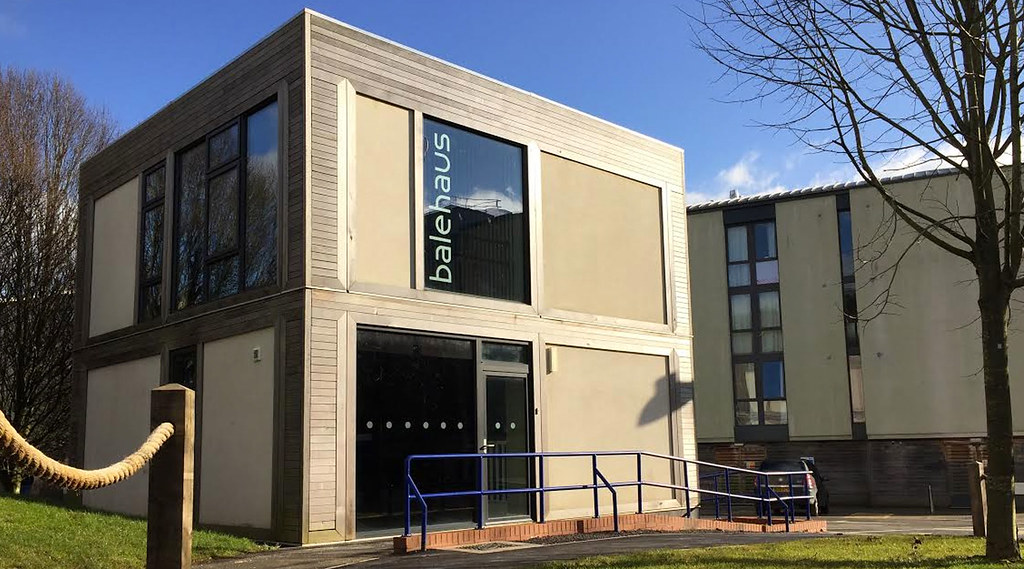Large-scale rethink needed
The UK is committed to an 80% reduction in greenhouse gas emissions by 2050.
The environmental impact of the construction industry is huge. The worldwide manufacture of cement contributes up to 10% of all industrial carbon dioxide emissions.
To meet these targets we need to rethink the design of our buildings on a large scale.
To help tackle this, researchers at the University of Bath’s BRE Centre for Innovative Construction Materials are researching low carbon alternatives to building materials currently used by the construction industry.
Lowest carbon footprint building method
BaleHaus is an innovative two-storey straw building, constructed on campus using ‘ModCell’ - pre-fabricated panels consisting of a wooden structural frame infilled with straw bales or hemp and rendered with a breathable lime-based system.
The system delivers a sustainable method of construction, combining the lowest carbon footprint and the best operational CO2 performance of any system of construction currently available.
Straw offers the perfect material for environmentally friendly construction due to its renewable nature.
The crop used for the straw can be grown locally, helping the local economy, and because it absorbs carbon dioxide as it grows, buildings made from it can be seen as having zero, or even a negative carbon footprint.
Also, due to its high insulating properties, houses made of straw bales need almost no conventional heating, keeping running costs low and minimising environmental impact.
Monitored for two years for its insulating properties, humidity levels, air tightness and sound insulation qualities, the research team established that the building maintains heat through very cold winters, stays dry and produces good sound insulation.
Over 200 straw houses already built
Since the construction of our BaleHaus, over 200 environmentally friendly straw homes have been built, as well as a local school in the city of Bath.
As well as reducing the environmental footprint, many low carbon building materials offer other benefits, including healthier living through higher levels of thermal insulation and regulation of humidity levels.
Our researchers are now focusing on the long-term performance and durability of using straw bale in construction with the aim of obtaining accreditation for straw bale housing.
This would ensure that homes in the UK made using this innovative technology would be both insurable, and meet industry standards.
